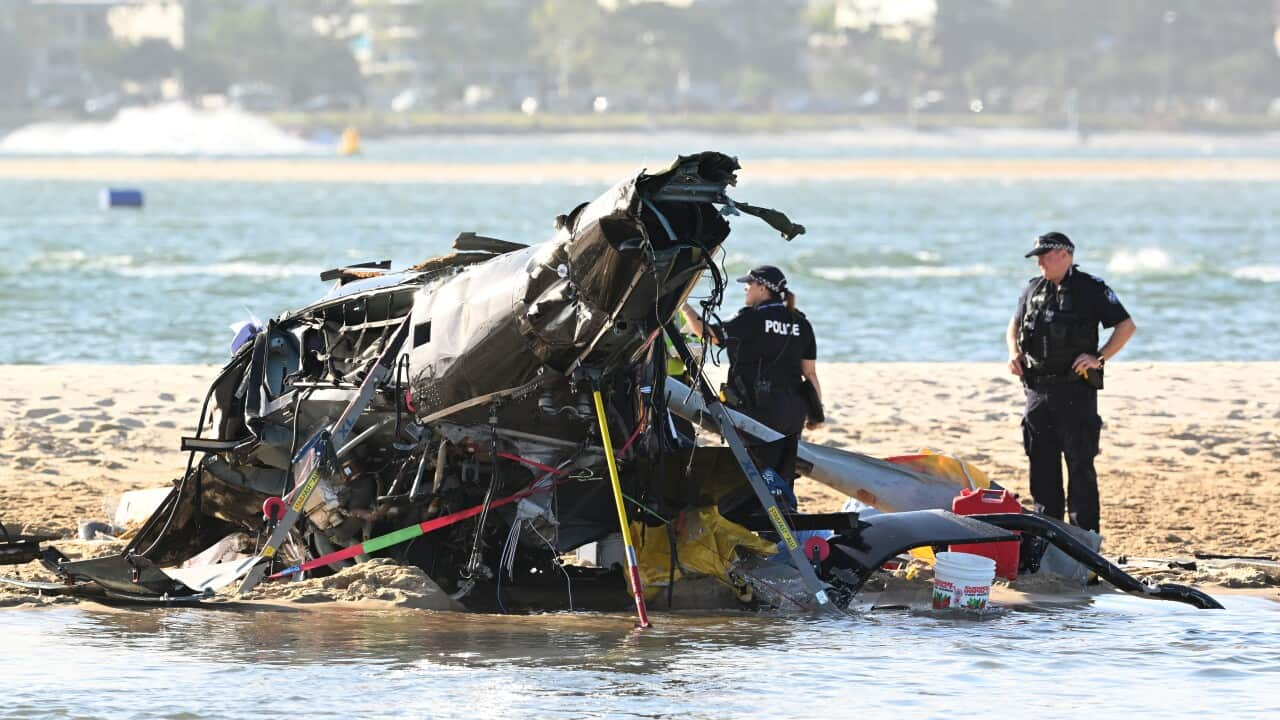A helicopter operator failed to manage safety risks before a fatal mid-air collision, investigators have found, opening the door to compensation claims.
Four people were killed and nine injured when two Sea World helicopters collided above the Gold Coast Broadwater in January 2023, during the peak of the busy summer holiday season.
A final report by the Australian Transport Safety Bureau was handed down on Wednesday, detailing the litany of failures that led to the crash.
What did the investigators find?
Limitations in visibility from both helicopters, failed radio transmissions and competing priorities when looking at boats and other aircraft led to the mid-air crash, the report found.
The two-year investigation showed issues at Sea World Helicopters ultimately leading to the fatal crash began years earlier when the ownership changed and safety protocols deteriorated.
Nine months before the crash, the helipad locations changed, increasing the risk of a collision point.
New helicopters were introduced a week before the crash and were not fitted with company radio communications and no real-time maps of other helicopters.
Crash was 'entirely preventable'
These changes and others to the company's operations undermined risk controls, the safety bureau's commissioner Angus Mitchell said.
"[Commercial aviation] should never be vulnerable to single-point failures such as a faulty radio or pilot's ability to visually detect another aircraft in the sky," Mitchell said.
The crash was entirely preventable, Mitchell added.
Victims seek compensation
Pilot Ashley Jenkinson, 40, British couple Ron and Diane Hughes, 65 and 57, and Sydney mother Vanessa Tadros, 36, died in the crash.
Tadros' son Nicholas, 10, underwent serious surgeries following the crash while Victorian mum Winnie de Silva, 33, and her nine-year-old son Leon were hospitalised.
The findings will feed into compensation claims lodged by Shine Lawyers in the Brisbane Supreme Court on behalf of victims inside the helicopters and those traumatised.
The claims, up to $925,000 per person, are for the pain and suffering caused by the crash, litigation specialist Roger Singh said.
Read more:


